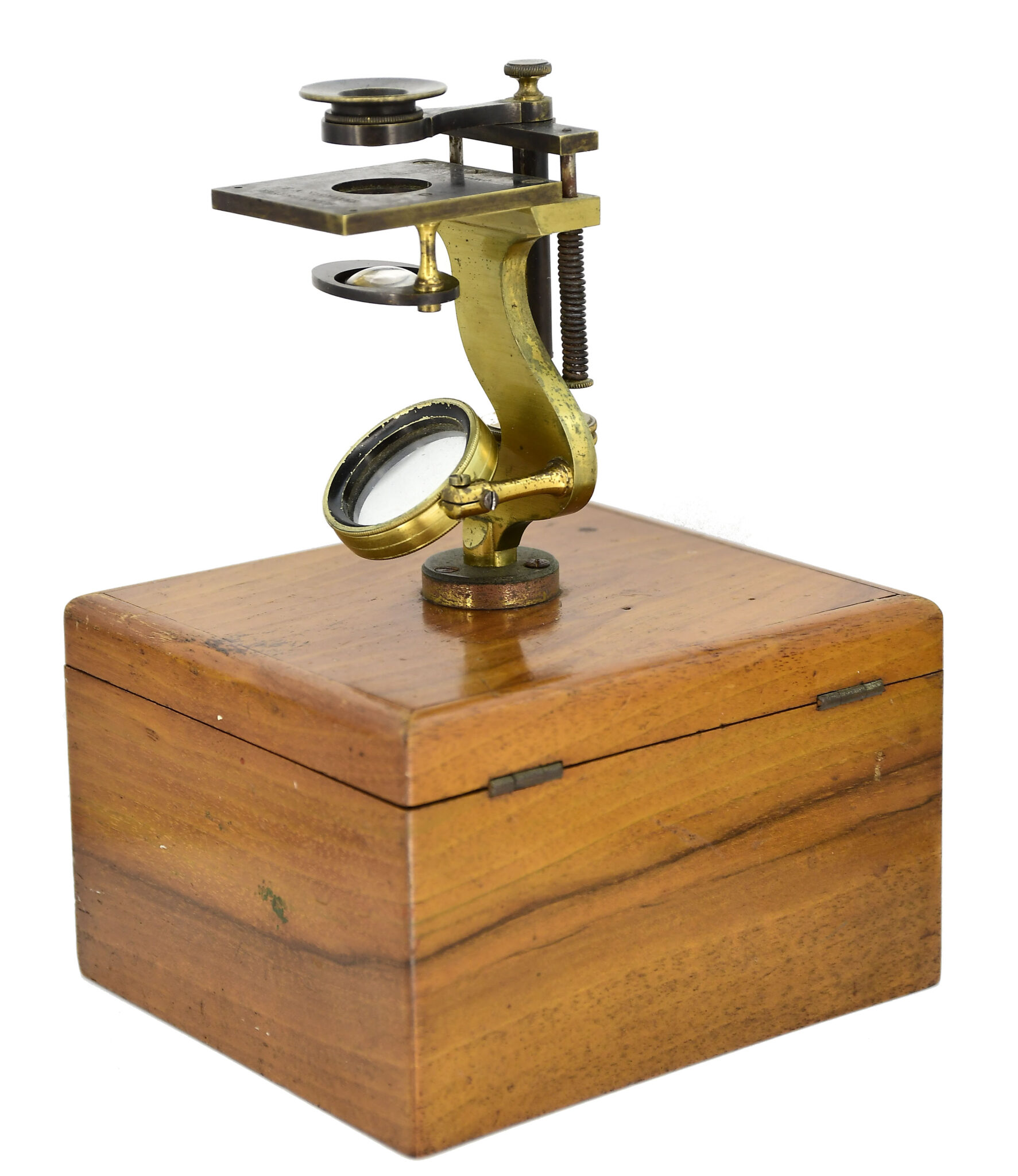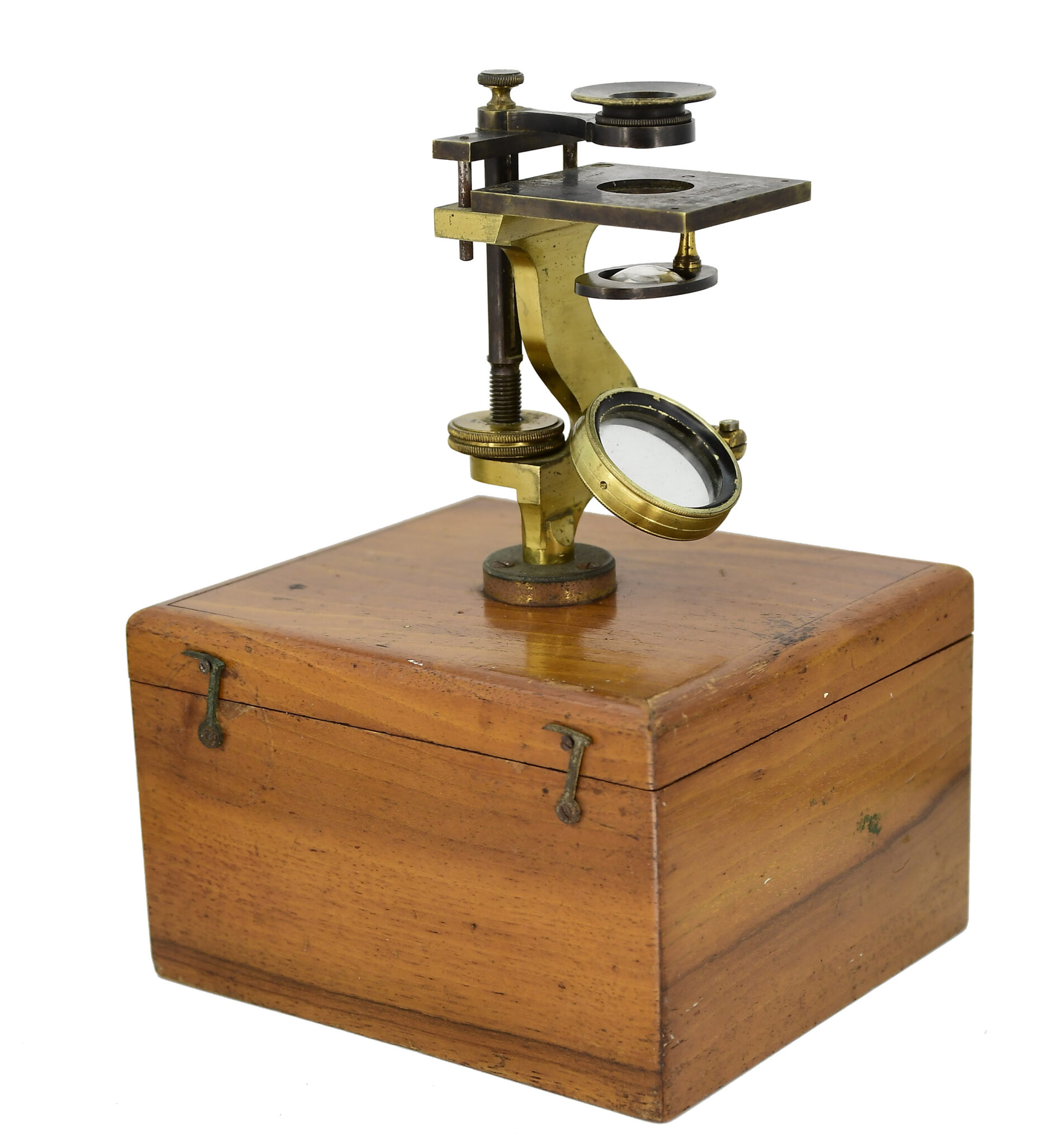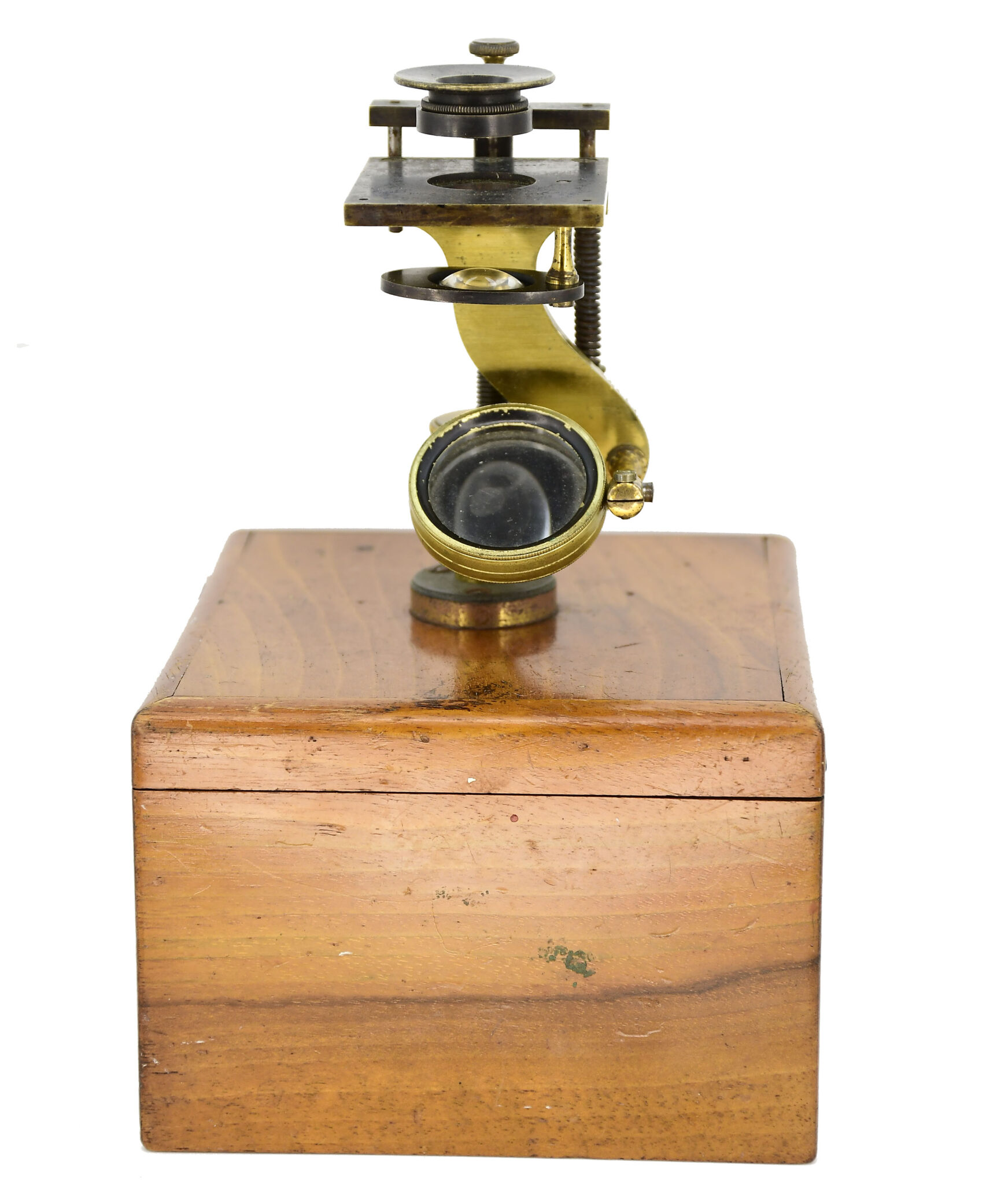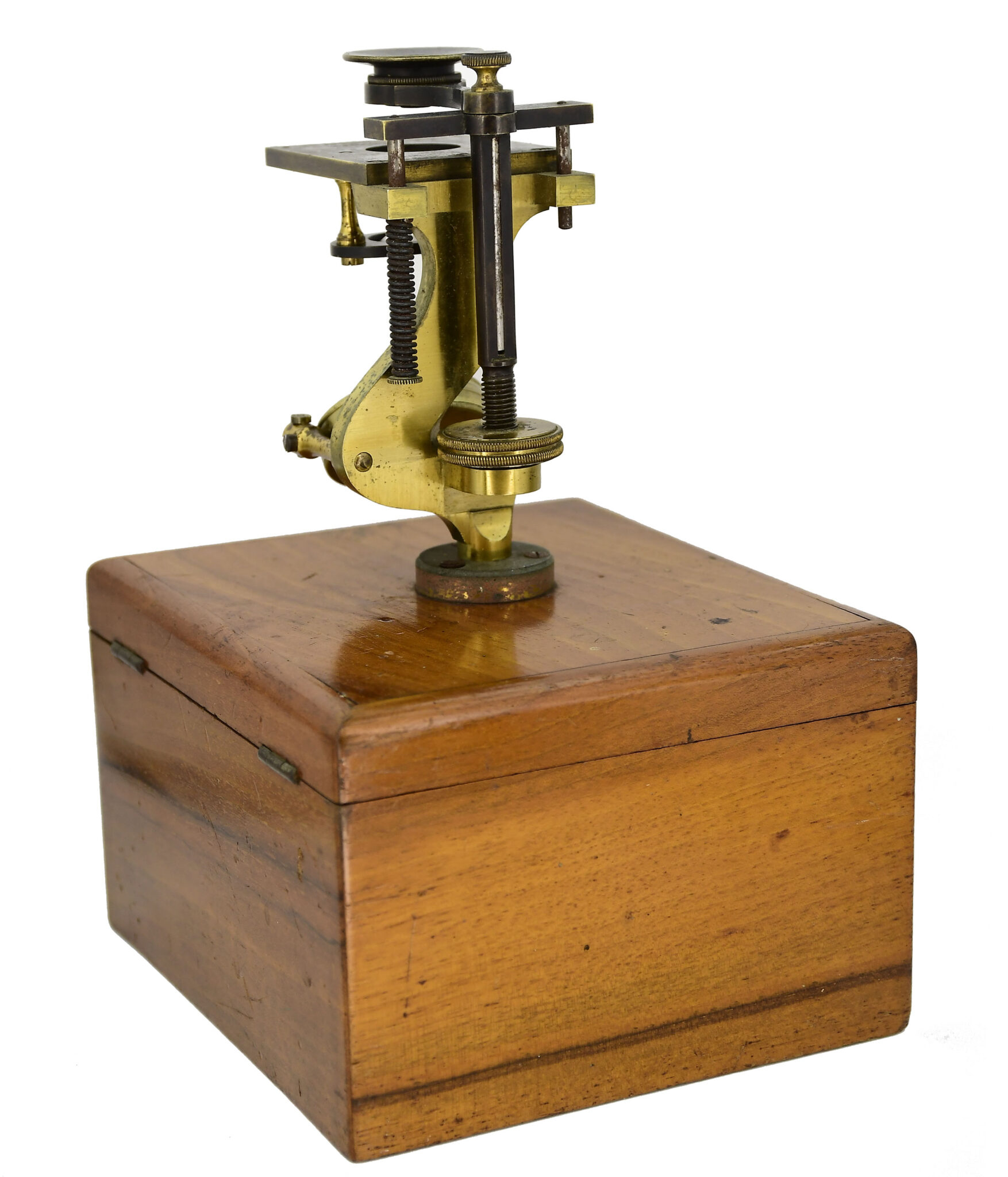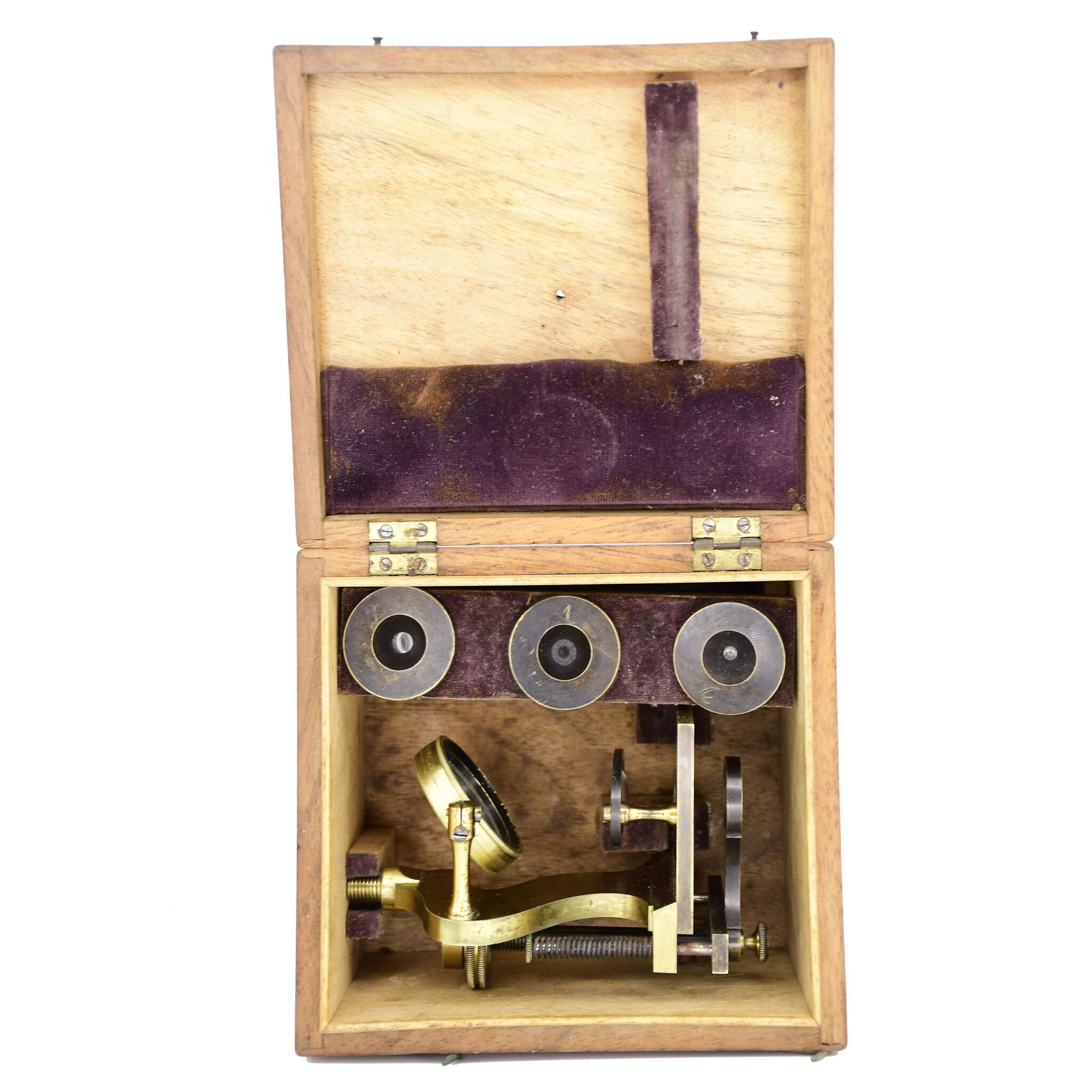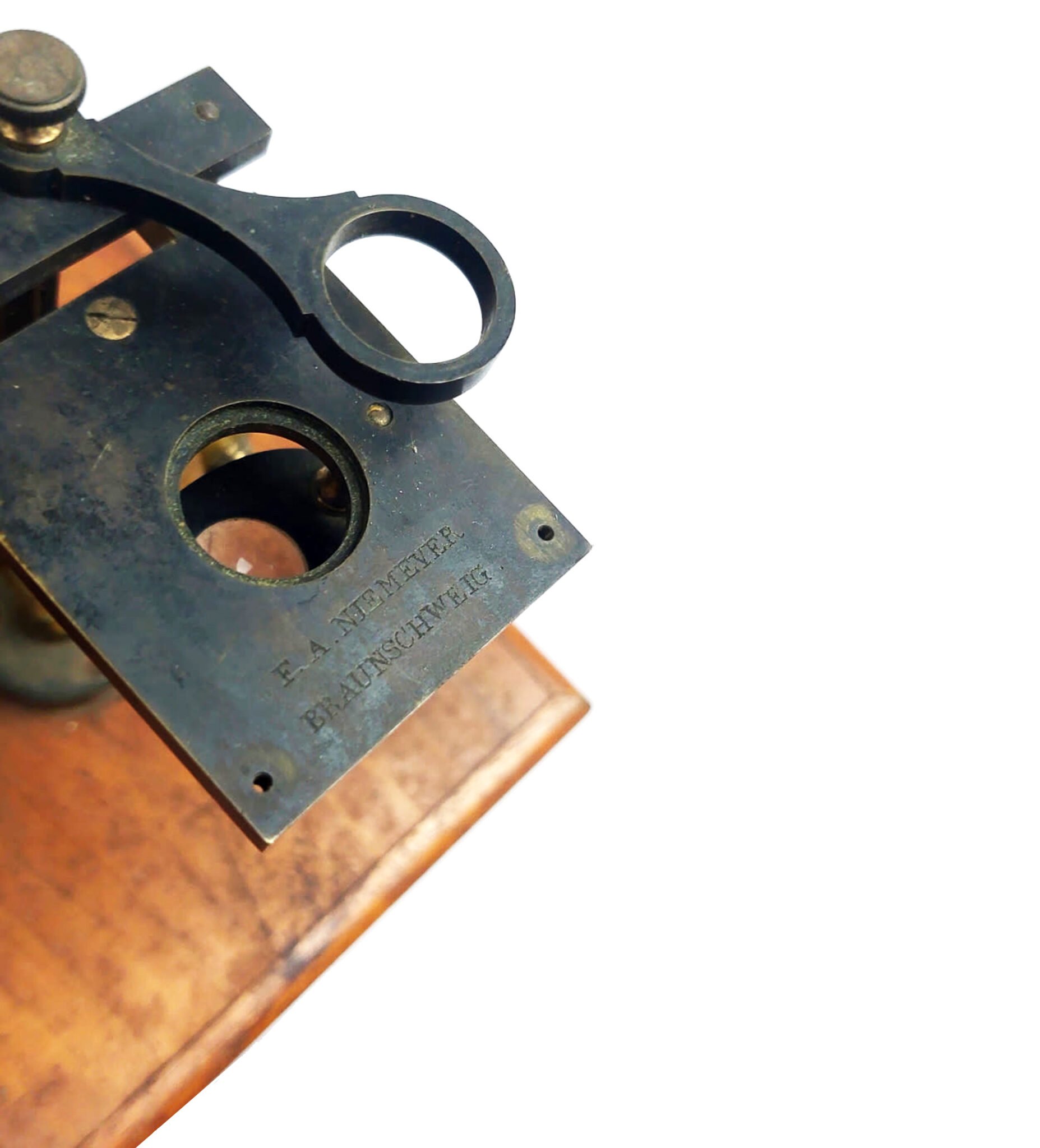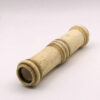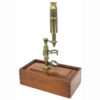Description
This is a unique copy of the first microscope produced by Carl Zeiss, which was introduced in 1843. In the initial model, the microscope was inserted into a dovetail guide on top of the walnut box. However, from 1849, these tripods were screwed onto the box, as seen in this example. This construction solution is both cost-effective to produce and more practical for users. Therefore, the microscope seen here is a copy of the later model that was produced after 1849. The microscope listed here is an almost exact replica of the original Zeiss model, with a few notable differences. It is signed on the stage: F. A. NIEMEYER BRAUNSCHWEIG The original Zeiss model had a limb made of blackened and anodized brass, with black painted and blued steel and bare spring steel. However, in this particular example, the limb is made of bare brass. Additionally, the case is secured with two hook and eye locks instead of a lock and key. Unlike the original walnut box, the replica is made of fruitwood, although the exact species is unknown. Despite these differences, there are similarities in other details. F. Niemeyer Optik was originally founded by Friedrich Niemeyer in 1843 at Langer Hof in Braunschweig. Later, in 1852, the business moved to its current location at Vor der Burg. In 1885, Emil Ahrens, a former employee of Carl Zeiss, became a part-owner of F. Niemeyer Optik. In 1919, Emil Ahrens’ son, Kurt Ahrens, also joined the company. F. Niemeyer Optik GmbH still operates from the same address. We are not aware of any microscopes that were actually manufactured by Niemeyer company, except for a few French microscopes that were sold by them and signed with their name on the boxes. It is possible that in some cases, they may have copied the Zeiss model for a specific task or a particular customer’s request. However, we do not have any evidence of this.
Ask the Dealer
Dealer information
 Gilgamesh
Gilgamesh
Gilgamesh is a mythological hero from the ancient cultures of West Asia, who embarked on a journey in search of youth and eternal life. Fleaglass Gilgamesh is located in Israel. As an Emeritus Professor of archaeology, I have spent over four decades researching the material culture of the distant past, utilizing the microscope as a powerful research tool. For the past thirty years, I have collected microscopes from the first 300 years of this remarkable instrument's history and have studied the cultural context of their use.
What started as a passion has turned into an obsession, and I now cultivate a nearly unique collection of historical microscopes from West Asia. From time to time, I offer surplus or particularly interesting items from my collection for sale. I am happy to provide free advice to any interested collector. If you would like to receive photos, information, and bibliographic references, or if you wish to discuss the details of the items I have for sale, please feel free to reach out.


